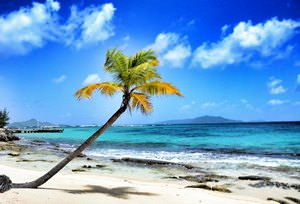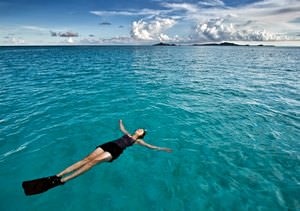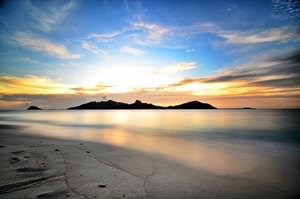 The island was settled no less than 5,5 thousand years ago. The Ciboney Indians were the first ones who came here from the north part of South America. Even though there is almost no material evidence of their life here survived until today, it’s a fact that they had been the sole rulers of the island for many years. Perhaps, a reason for it was their low cultural awareness or natural disasters which used to appear on Saint Vincent pretty often. In the 3rd century AD, the Ciboney were pushed back by the Arawak people who came here after. And then, in the 14th century, the Arawak had to share the land with Caribs martial tribes. The island was open for Europe during the times of Christopher Columbus’ legendary voyage. It was discovered on 22 January which was the feast day of the patron saint of Lisbon and Valencia, Vincent of Saragossa. That’s how the island got its name.
The island was settled no less than 5,5 thousand years ago. The Ciboney Indians were the first ones who came here from the north part of South America. Even though there is almost no material evidence of their life here survived until today, it’s a fact that they had been the sole rulers of the island for many years. Perhaps, a reason for it was their low cultural awareness or natural disasters which used to appear on Saint Vincent pretty often. In the 3rd century AD, the Ciboney were pushed back by the Arawak people who came here after. And then, in the 14th century, the Arawak had to share the land with Caribs martial tribes. The island was open for Europe during the times of Christopher Columbus’ legendary voyage. It was discovered on 22 January which was the feast day of the patron saint of Lisbon and Valencia, Vincent of Saragossa. That’s how the island got its name.
Saint Vincent is a perfect place for children who actually enjoy beauty of unspoiled nature. Here you can find literally everything: clean magnificent volcanic beaches, tropical forests, and …  Open
Open
The local cuisine is a kind of a mix of various Amerindian, English, French, and Indian cooking traditions. Due to the great number of tourists coming here, there are lots of casual …  Open
Open
 So, if you’d like to see monuments devoted to the European civilization, then you definitely should come to Fort Duvernette. The island’s got its name thanks to the dilapidated fort there which was built by Frenchmen in the 18th century as protection from sea attacks. You can see not only strong walls, destroyed barracks, pantries, and armory but absolutely real cannons which were left to rust here, too.
So, if you’d like to see monuments devoted to the European civilization, then you definitely should come to Fort Duvernette. The island’s got its name thanks to the dilapidated fort there which was built by Frenchmen in the 18th century as protection from sea attacks. You can see not only strong walls, destroyed barracks, pantries, and armory but absolutely real cannons which were left to rust here, too.
Planning a trip to Saint Vincent, you have to remember that it’s not a good idea to start conversations about colonies and the way Europeans treat locals here. Descendants of …  Open
Open
 If you want to immerse yourself into the traditional architecture of the 18th century British colonies, go to Kingstown – the capital of both the island and the state. The main square, the building of the Governor-General, harbor – all of these hasn’t changed since it was originally built. There are magnificent iconic constructions in the capital too. For example, St. Mary’s Catholic Cathedral of 1820 which is famous for the combination of Romanesque arch and columns, Gothic spires and flowers ornament. The Cathedral was restored in 1930 after a devastating hurricane. Moreover, it is built from blocks of solid lava. The English Cathedral of St. George, built in the 19th century, can boast of its gorgeous window called «Red Angel». Originally it was planned to place it in St. Paul’s Cathedral in London, and yet, it was sent to Kingstown as a gift, as the Queen considered angels to wear only white clothes. In addition, windows of the Kingstown’s Methodist Church are highly beautiful as well.
If you want to immerse yourself into the traditional architecture of the 18th century British colonies, go to Kingstown – the capital of both the island and the state. The main square, the building of the Governor-General, harbor – all of these hasn’t changed since it was originally built. There are magnificent iconic constructions in the capital too. For example, St. Mary’s Catholic Cathedral of 1820 which is famous for the combination of Romanesque arch and columns, Gothic spires and flowers ornament. The Cathedral was restored in 1930 after a devastating hurricane. Moreover, it is built from blocks of solid lava. The English Cathedral of St. George, built in the 19th century, can boast of its gorgeous window called «Red Angel». Originally it was planned to place it in St. Paul’s Cathedral in London, and yet, it was sent to Kingstown as a gift, as the Queen considered angels to wear only white clothes. In addition, windows of the Kingstown’s Methodist Church are highly beautiful as well. 

